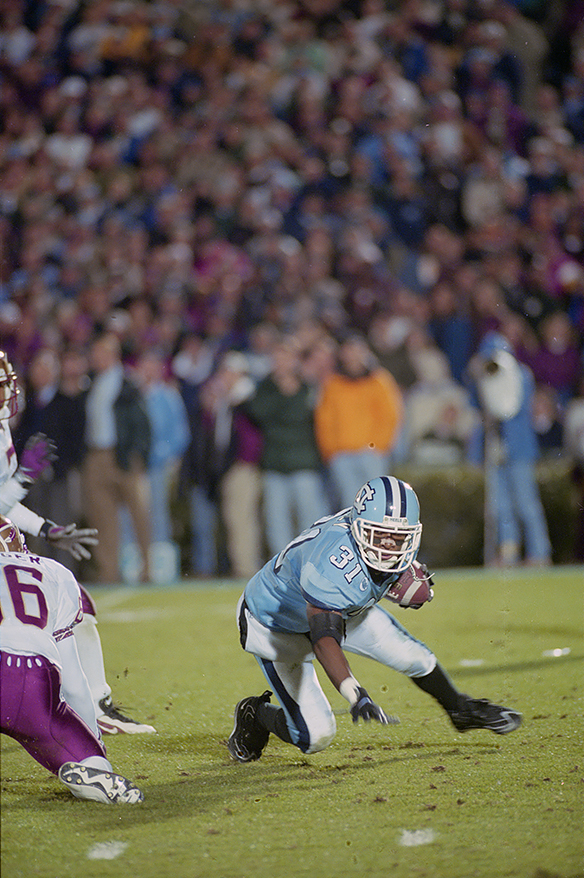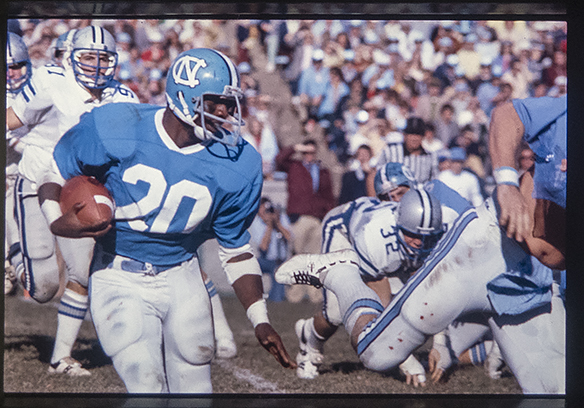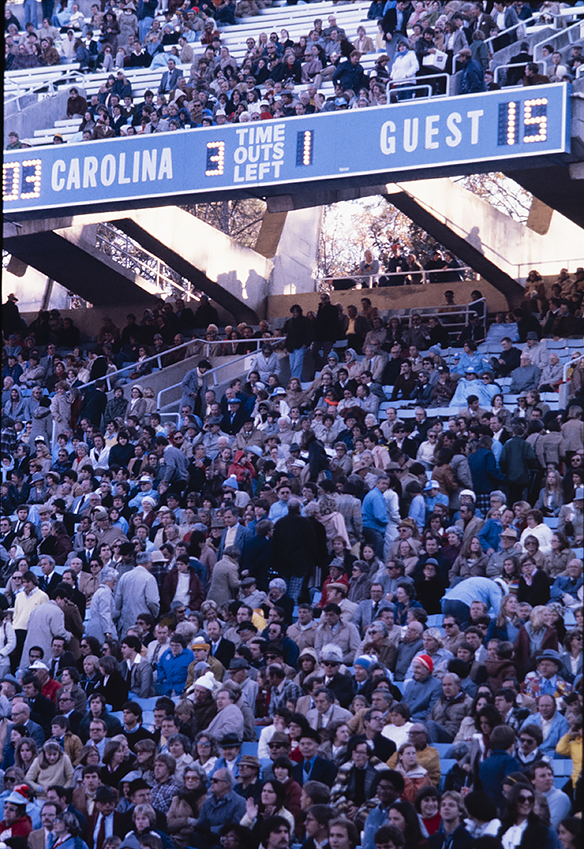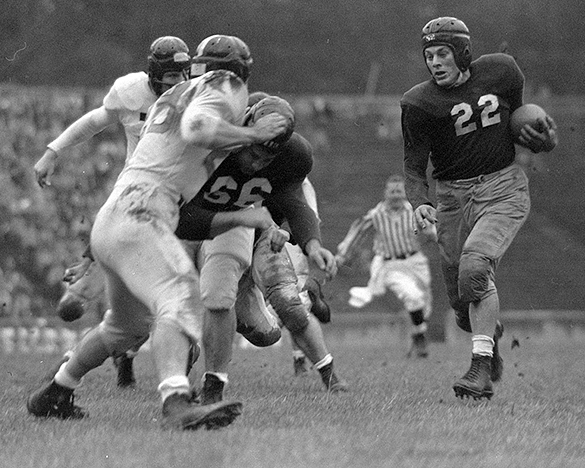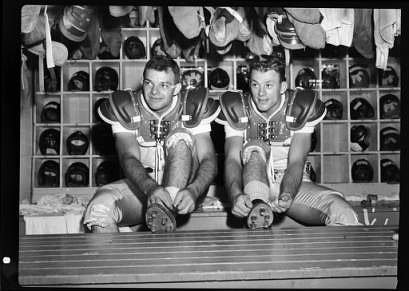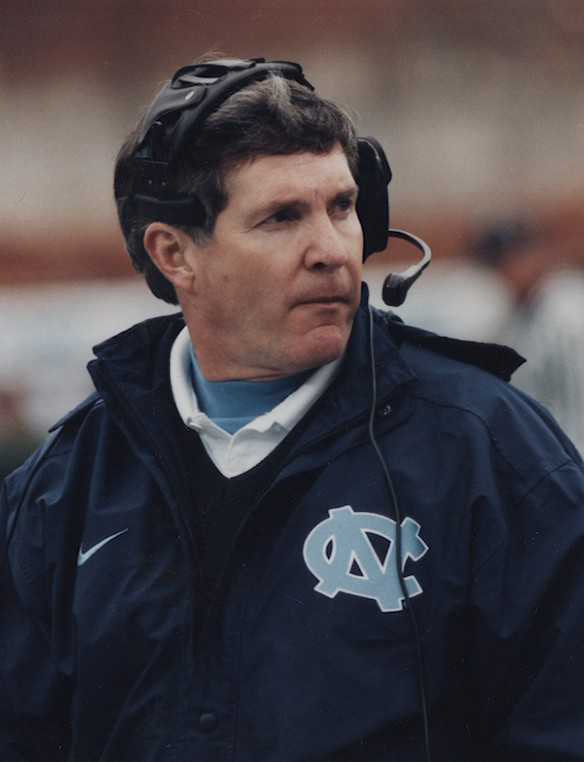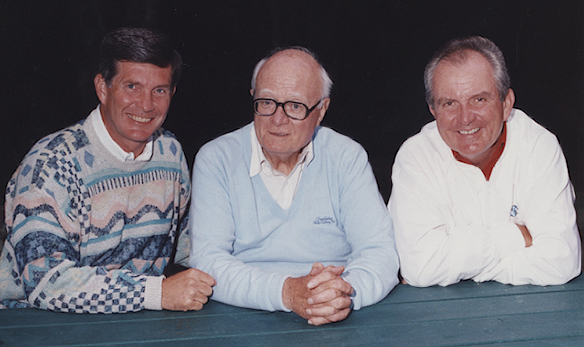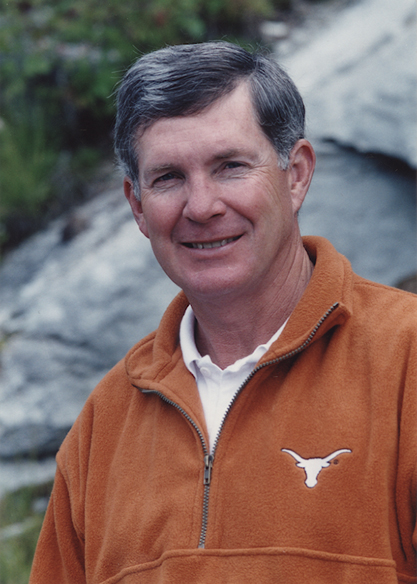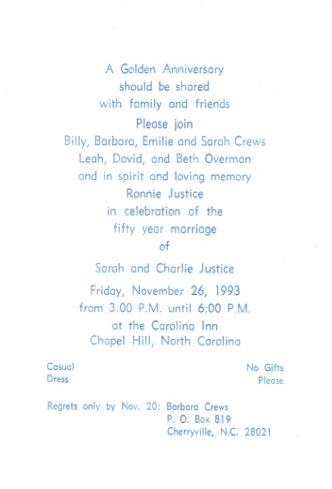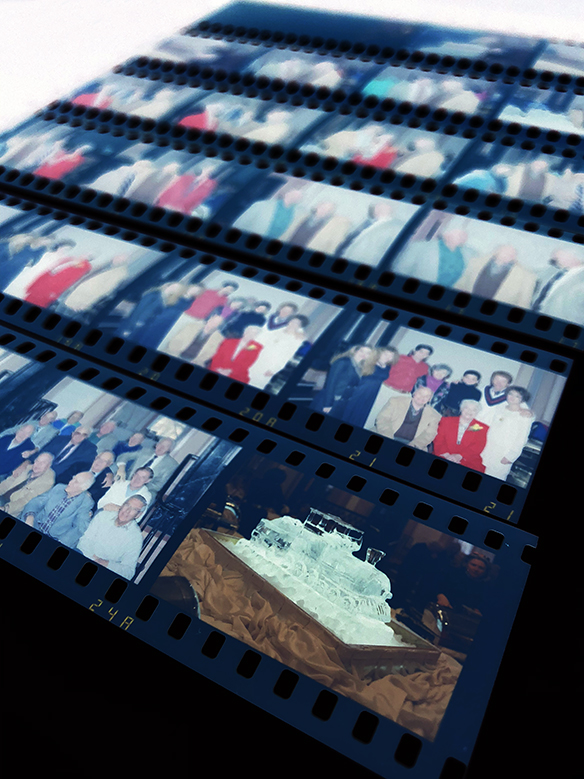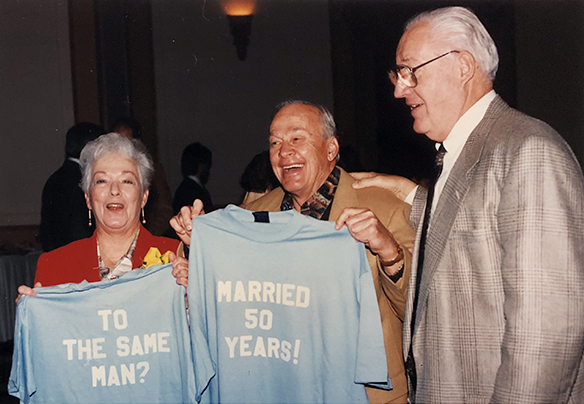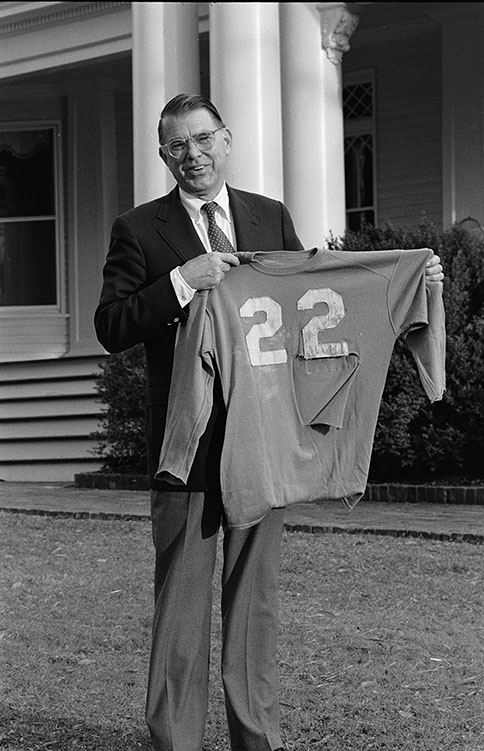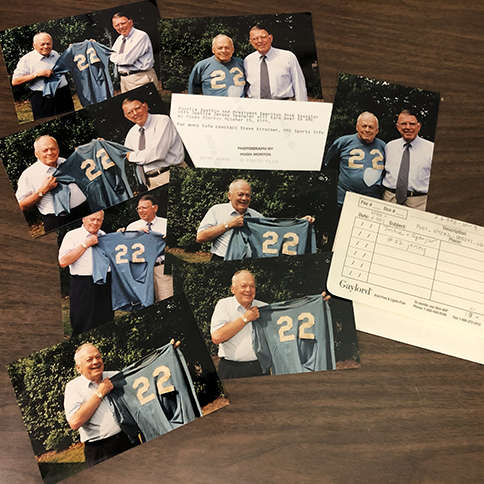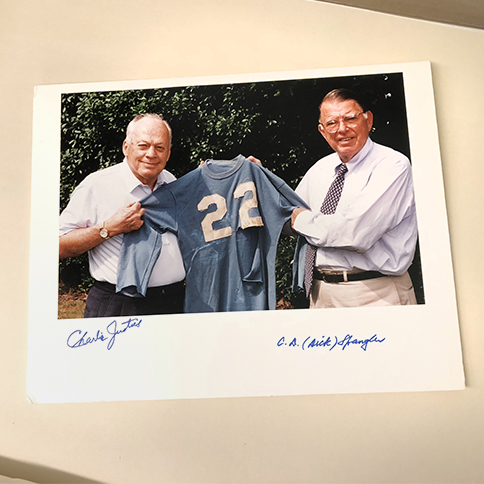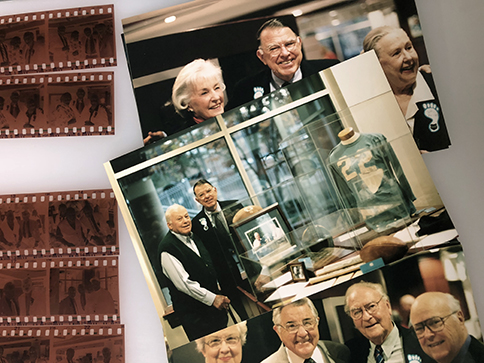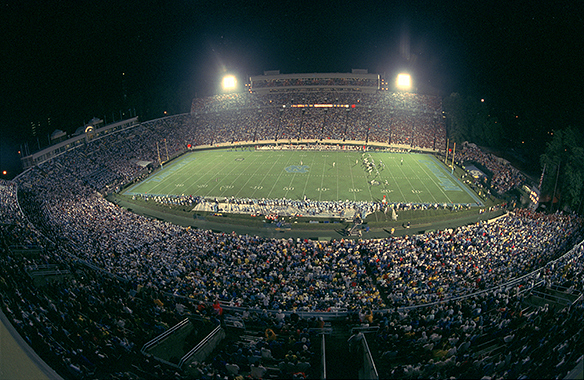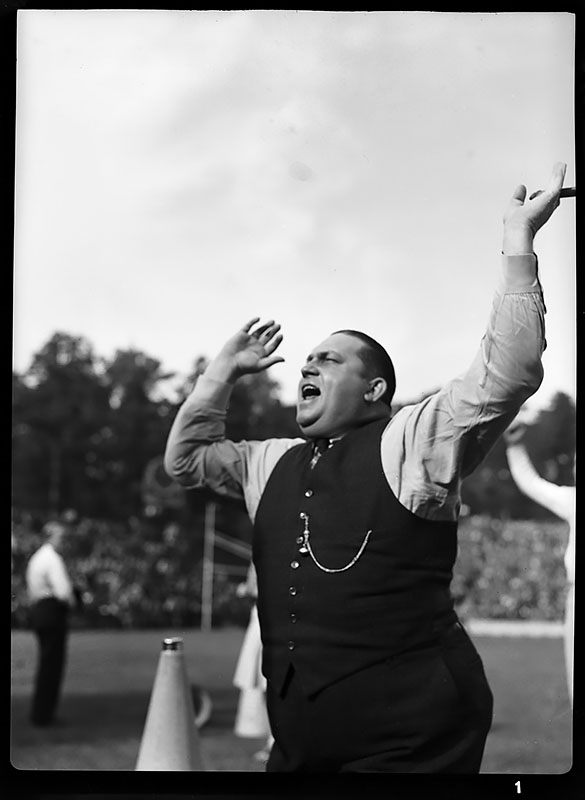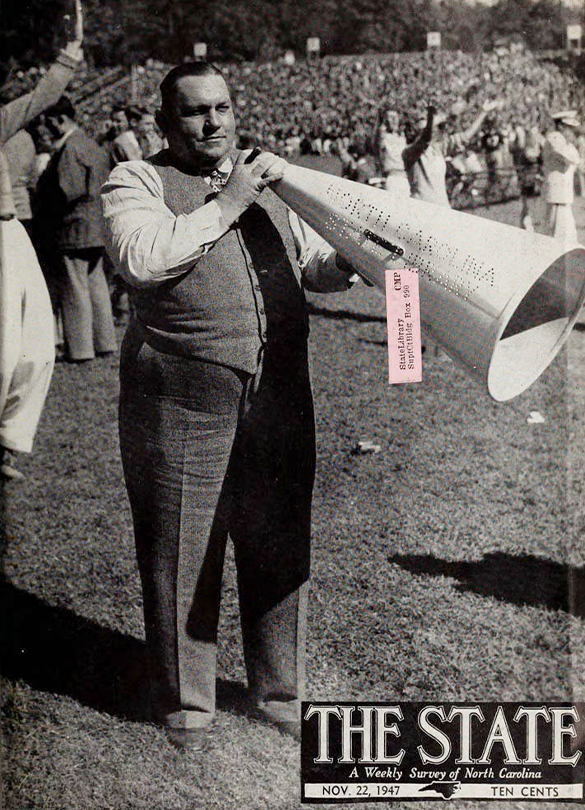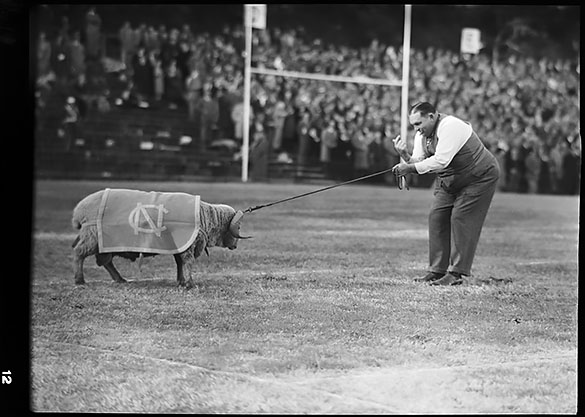Diabetes Month is observed every November so individuals, health care professionals, organizations, and communities across the country can bring attention to diabetes and its impact on millions of Americans. A View to Hugh would like to relate an event from the past that raised about $20,000 for diabetes research while at the same time had some fun at the expense of a Tar Heel sports legend. But first, a bit of history . . .
In 1970 a group of parents in New York City whose children had Type 1 diabetes founded an organization they called the Juvenile Diabetes Foundation, or JDF. The group was defined by its commitment to research-funding and finding a cure for juvenile diabetes. In 2012, the Foundation changed its name to the Juvenile Diabetes Research Foundation, or JDRF, putting a greater emphasis on the need for research.
No one in the celebrity world came close to doing what actress Mary Tyler Moore accomplished with JDRF. Her efforts were tireless. She had but one goal when it came to diabetes: to bring to the attention of the world the battle of diabetes and how important it is to one day cure it. She attended events, met with elected officials, testified before congress, and was always available to help local JDRF chapters with local fund raising by offering her celebrity. And that’s exactly how she helped the Charlotte chapter of JDF in 1984 when they staged their fifth annual JDF celebrity roast. Moore recorded videotape spots for the local television stations to air promoting the importance of supporting the Foundation.
Mary Tyler Moore died at the age of 80 earlier this year on January 25, 2017, but she will always be remembered in Charlotte for what she did to make the JDF Celebrity Roast of Tar Heel football legend Charlie “Choo Choo” Justice a success thirty-three years ago. Morton collection volunteer Jack Hilliard looks back to Monday, April 30, 1984.

Admission ticket, scan courtesy of Jack Hilliard.
A Prolog
A celebrity roast is an event in which a specific individual, a guest of honor, is subjected to good-natured jokes at their expense and it is intended to amuse the event’s audience and in many cases to raise money for a particular charity. Such events are intended to honor the individual in a unique way. In addition to jokes, such events may also involve genuine praise and tributes. The individual is surrounded by friends, fans, and well-wishers, who can receive some of the same good natured treatment as well during the course of the evening.



Charles Justice has contributed his fame to hundreds of drives and worthy causes and has generally and consistently served as a wholesome example to impressionable youth.
—Hugh Morton, May, 2000
In early January 1984, it had been almost thirty years since Charlie Justice played his final football game with the Washington Redskins and almost thirty-four since he played his final varsity game with the Tar Heels. Nonetheless, when the Charlotte Chapter of the Juvenile Diabetes Foundation approached him about being the honored guest at the Fifth Annual JDF Celebrity Roast, Charlie’s reply was yes, “these things are for a great cause and I enjoy them.” Charlie had been guest of honor for two other celebrity gatherings, one in Greensboro on October 29, 1980 called “Dinner of Champions,” sponsored by the Central North Carolina Chapter of the Multiple Sclerosis Society, and one in his native Asheville on January 27, 1984 sponsored by the Western Carolina Children’s Foundation.
Justice was in great company at the fifth annual event. The four who preceded Justice were Clyde McLean of WBTV in 1979, Kays Gary of The Charlotte Observer in 1980, Eddie Knox, former Charlotte mayor in 1982, and famed basketball player and coach Horace “Bones” McKinney in 1983.
If you didn’t know better, you might think this was a UNC reunion. The event’s Honorary Chairman was Johnny Harris, UNC Class of 1969. Two other Tar Heels who worked behind the scenes were Erskine Bowles ’67 and Ray Farris ’62. Tar Heel roasters included newspaper publisher Orville Campbell ’42; Woody Durham, Voice of the Tar Heels, ’63; UNC President Dr. William Friday, ’48; and UNC All-America football star and Justice’s classmate Art Weiner, ’50.

Dignitaries featured during the Fifth Annual JDF Roast: (back row, left to right): Bill Hensley, Orville Campbell, Bill Friday; (front row, left to right): Woody Durham, Art Weiner, Charlie Justice, John “Buck” Fraley. Photograph by Hugh Morton, cropped by the editor.
With Master of Ceremonies Bill Hensley in control (sort of), the “roasting” fun began. Charlie was ushered into the Sheraton Center with the singing of “All The Way Choo Choo” to the delight of the 450 guests. The singing was led by Charlie’s daughter Barbara Crews.
Roaster: Orville Campbell
Chapel Hill newspaper publisher and the man responsible for recording “All The Way Choo Choo,” Orville Campbell then stepped up to the mic. “We always liked to take our songs over to Mr. W. D. Carmichael, then acting University President, and get his opinion. So when Hank Beebe and I finished All The Way Choo Choo, I went over to Carmichael’s office. He was extremely busy that day, but I went in anyway. His desk was covered with papers and he didn’t even look up.
“What do you want, Orville?” said Carmichael.
“I just wanted to know if you had heard our last song.”
“I hope the h— I have,” was Carmichael’s reply.
“Back in 1958,” Campbell continued, “I published a book which was written by Bob Quincy and Julian Scheer called Choo Choo: The Charlie Justice Story. We still have a warehouse full of those books over in Chapel Hill and I brought a few of them over here tonight to see if anybody here would pay $25 for a copy and if so, we’ll donate that money to JDF. And after we’re finished here, we’ll lock the door so Charlie can’t get away and have him sign ‘em.”
Campbell, who had been Charlie’s friend and fan since he arrived in Chapel Hill in 1946, then took out a letter that UNC Head Football Coach Carl Snavely supposedly wrote to Justice following that famous 1948 Texas game in Chapel Hill.
“In discussing your touchdown pass to Art Weiner, Charlie, Coach Snavely reminded you that, ‘Your wobbly pass to Art Weiner would have never been caught except that Art made a great catch and Texas had a poor pass defense.’”
Campbell then put on a number 22 college all-star jersey and modeled it for the crowd. Justice had donated the jersey to be auctioned with money going to JDF. The jersey went for $1,000.
Roaster: Woody Durham
Next up was “The Voice” of Tar Heel football and basketball, Woody Durham. Woody told the story of how Justice had decided to go to the University of South Carolina, when his brother Jack talked him out of it and convinced him he should go to UNC. Durham then turned to Charlotte JDF Chapter President Cassie Phillipi and asked, “Cassie, how much money do you think we could raise if we were holding this gathering in Columbia tonight?” Then Durham said he wanted to relate a recent story from his visit to Atlanta and added, “This is the only story I’ll tell from that Atlanta trip . . . I promise.”
“I was in Atlanta covering Dean Smith’s 1984 Tar Heels in the NCAA Tournament. The morning of the game, I was in the hotel room preparing for that night’s radio broadcast. The TV set was on but the sound was turned down real low and I wasn’t paying any attention to it. Then something caught my attention. The CBS program The Price is Right host Bob Barker had introduced a contestant form North Carolina. Then Barker said, ‘Who was the great All America football player from North Carolina back in the 1940s?’ Immediately someone in the audience shouted out, “Choo Choo.” Barker quickly added, That’s right, Choo Choo Charlie Justice.’”
“Folks it’s been 35 years since Charlie played for Carolina, but his name is still magic.”
Roaster: Bill Friday
Up next . . . University of North Carolina President Dr. William Friday spoke of “the rightness of all he symbolizes in American Sports.”
“When thirty years pass, a haze often settles over memory but not the recollections of Charlie Justice on the football field. He could do it all and he did. . . . All of the adulations and publicity never increased his hat size. An unassuming and cheerful manner always has characterized this man of extraordinary gifts. He has been greatly blessed in another way, he has Sarah.”

Woody Durham, John “Buck” Fraley, and Sarah and Charlie Justice during the evening’s festivities. Photograph by Hugh Morton.
The 52-page souvenir program book for the 5th Annual JDF Roast is, in reality, a Charlie Justice scrapbook with dozens of Hugh Morton photographs included. The book was designed by George Van Allen of G.V.A. Associates and the Justice cover-caricature was done by Gene Payne of The Charlotte Observer. Charlie must have approved of the caricature; there was a huge version of it on the wall of his Cherryville office. Also included in the book is a beautifully written Justice profile by Observer columnist Ron Green.
Roaster: John Fraley
John L. “Buck” Fraley, President and Chief Operating Officer of Carolina Freight, was next up. Fraley’s company was a prime client of the Justice-Crews Insurance Company in Cherryville and had been so for many years. Fraley, a NC State graduate, talked about Charlie’s brief 1964 venture into politics. Also in the audience was Ken Younger who would take Fraley’s place with the company in 1985 following Fraley’s retirement. And if memory serves me correctly, it was Younger who bought the Justice All-Star jersey and then presented it to Charlie’s daughter Barbara. And by the way, Ken Younger, is a 1949 Duke graduate, who played football against Charlie and the Tar Heels.
Roaster: Art Wiener
Hugh Morton and the Charlotte JDF Chapter had prepared several large Charlie Justice action pictures and offered them for sale—the profits, of course, going to the Diabetes Foundation. So when Justice’s friend, teammate, and business partner Art Weiner stepped up to speak, he commented on the pictures.
“Did you ever wonder why there are so many fantastic Hugh Morton action pictures of Charlie Justice? Well, Hugh Morton was a world class, fantastic photographer, but there is another reason. We had one member on our team who never touched the ball . . . never made a tackle . . . never threw a block. His only purpose in life was to let Charlie Justice know where Hugh Morton was on the sidelines.”
“Where do you suppose he had his first heart attack? At halftime at the Carolina-Pitt game a few years back. They were carrying him out on a stretcher and everybody was looking and there was Charlie, waving to the crowd.”
Weiner then looked over at Orville Campbell. “I didn’t know the ball was supposed to spiral until I got into pro ball. Charlie always threw it end-over-end.”
“I lived beside Charlie for four years and he got new Cadilacs all four years. There was always trucks backing up to his door and unloading things.”
“My scholarship was a piece of wood with a nail on it, and I was told that I could keep anything that blew across my yard.”
When the laughter died down, Weiner got serious.
“I can honestly say Charlie Justice is not only the best friend I ever had, but in my opinion he is greatest athlete North Carolina ever had.”
Charlie Justice
When Justice finally got to the mic, he denied all, then thanked all for attending, and poked a little bit of fun at his “roasters,” telling his dear friend Art Weiner, “at least you had a scholarship at Carolina. . . I didn’t even have a one. . . Sarah had the scholarship in our family. And as for those four Cadilacs you mentioned . . . was really one ’48 Chevy.” He then related the importance of the fund-raising for diabetes research. At the end of the evening’s festivities, more than $20,000 had been raised for that research.



Ron Green, writing in the May 2, 1984 edition of The Charlotte Observer under the headline “Highest Praise To Choo Choo,” said, “They came not to praise Charlie Choo Choo Justice but to roast him. They did both Monday night at the Sheraton Center. . . Others of his era are yellowed memories now, but Justice shines on, brightly, like a star . . . the long, rambling touchdown runs . . . the winning passes . . . the record-setting punts that took North Carolina out of danger. Almost campy. Almost as if he were playing himself in the lead role of a low budget movie with the title ‘Justice Rides Again.’ So good. So right.”



WFMY-TV in Greensboro recorded the JDF roast in Charlotte on videotape for filmmaker David Solomon, the President of David Solomon Productions in Winston-Salem. Portions of the roast appear in Solomon’s Sports Extra TV production of All The Way Choo Choo. I had the honor of directing and editing the program, along with Larry Fitzgerald, the late WFMY-TV photojournalist. North Carolina Sports Hall of Fame Broadcaster Charlie Harville narrated the program. And once again, Charlie Justice’s popularity across the entire state was shown when the TV documentary was sponsored by “Goody’s” of Winston-Salem. The President of Goody’s, Duke University Class of 1949 football player Tom Chambers, was an opponent of Justice’s during their college days. In addition to the “Goody’s” commercials, the program also included JDF-Mary Tyler Moore public service announcements.



In closing, I would like to revisit words from Bill Friday:
“(Charlie Justice) is loyal. He has been on call when his alma mater needed him. He has lent his name in time and talent to a host of worthy causes since his jersey went into the trophy case.”
“He has shown in his personal life the same quality of courage and determination he exhibited in athletics. Charlie Justice was voted All-American for his exploits on those memorable Saturdays of another era.”
“I want to say, Charlie, that in the eyes of your legions of friends today, you are an All-American every day of the week.”


